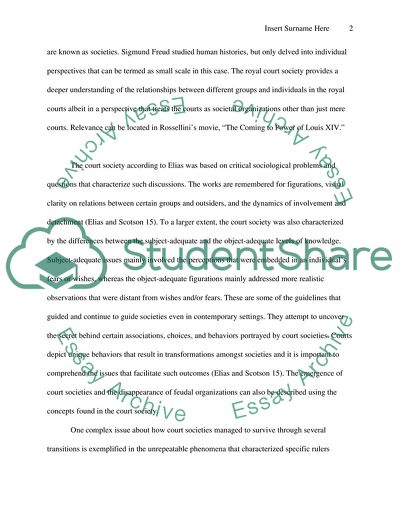Cite this document
(The Civilizing Process vs The Court Society Essay Example | Topics and Well Written Essays - 1500 words, n.d.)
The Civilizing Process vs The Court Society Essay Example | Topics and Well Written Essays - 1500 words. https://studentshare.org/sociology/1769088-rhetorical
The Civilizing Process vs The Court Society Essay Example | Topics and Well Written Essays - 1500 words. https://studentshare.org/sociology/1769088-rhetorical
(The Civilizing Process Vs The Court Society Essay Example | Topics and Well Written Essays - 1500 Words)
The Civilizing Process Vs The Court Society Essay Example | Topics and Well Written Essays - 1500 Words. https://studentshare.org/sociology/1769088-rhetorical.
The Civilizing Process Vs The Court Society Essay Example | Topics and Well Written Essays - 1500 Words. https://studentshare.org/sociology/1769088-rhetorical.
“The Civilizing Process Vs The Court Society Essay Example | Topics and Well Written Essays - 1500 Words”. https://studentshare.org/sociology/1769088-rhetorical.


